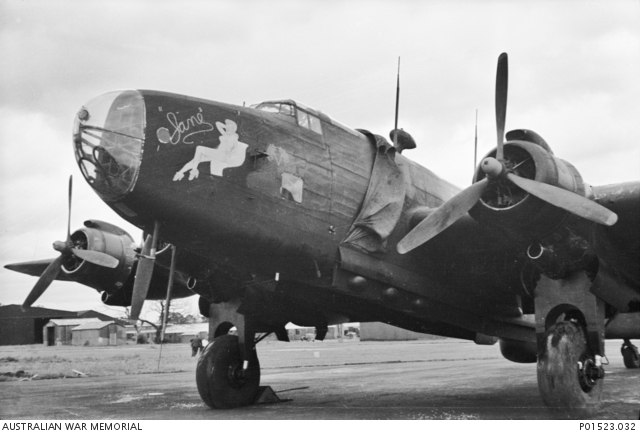"The Last Halifax"
My name is Jacob Lessmann. I am 15 years old and had the opportunity to work in Military Heraldry & Technology section for a week.
On the night of 16/17 April 1945, Halifax MZ467 of 462 Squadron, RAAF, embarked from the RAF base at Foulsham, UK at 2358 hours [11:58pm] to carry out a flight over Augsburg, Germany. Ten aircraft from the squadron took part in the mission and of these only MZ467 did not return. Six of the aircraft took part in a feint window attack on Augsburg and the other four operated with the main force.
Crew of MZ467 on 16/17 April 1945:
RAAF 426118 FO Lodder, A M Captain (Pilot)
RAF Flt Sgt E Windus, (Navigator)
RAF Flt Sgt Naylor, P A, (Bomb Aimer)
RAAF 434183 Flt Sgt C R H Foster, (Wireless Air Gunner)
RAF Sgt R E Casterton, (Rear Gunner)
RAF Sgt R McGarvie, (Mid Upper Gunner)
RAF Sgt J E A Gray, (Flight Engineer)
RAAF 432388 Flt Sgt E D Tisdell, SD (WOP)
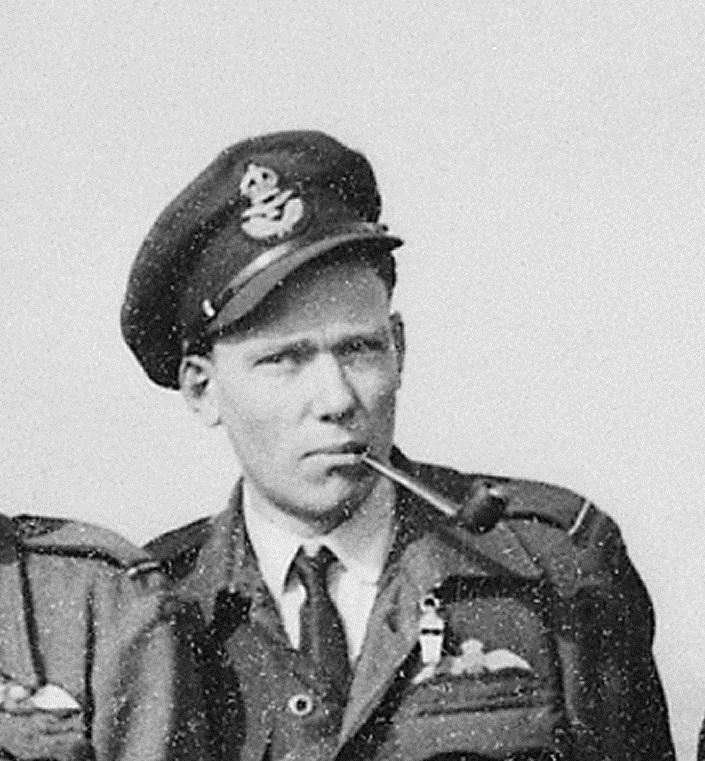
Of the eight crew members only three survived. Flight Officer Lodder, Flight Sergeant Naylor and Sergeant Casterton became POW’s while the other five members of the crew died. They are buried in the Durnbach War Cemetery, about 46 kilometres south of Munich.
Lodder baled out separately from the other survivors and did not know their fates. In a later report, he stated; “The aircraft was damaged by two attacks from a night fighter. After the first attack the intercom and emergency light was U/S [ damaged and unserviceable] and no orders could be given. The Engineer raced past me towards the forward hatch, with his clothes on fire and screaming. Doubtful if he bailed as he seemed to collapse opposite me. Do not know who baled out. The aircraft controls were jammed after the first attack and flames spread as far as my compartment after the second attack. The fate of the others is unknown. They were probably wounded and unable to bale out as the aircraft was blazing for some time before I found myself outside and floating down after being blown out. I managed to release the chute. The aircraft crashed about 5 miles from Nordendorf, North West of Augsburg. I walked for an hour and a half in a westerly direction before giving myself up at Nordendorf and received treatment. I had 1st and 2nd degree burns to my face & hands and a broken foot and was treated in a German Hospital. I was later released as a stretcher case and repatriated to UK [United Kingdom]”.
This was the last Halifax shot down by German Night fighters during the war.
In 2005, the remains of the Halifax were found in a field in Germany. There were many items found at the crash site. Some are now in the Memorial’s collection, including:
The Flare pistol and Flare Cartridge:
The Flare pistol that was found in the wreckage of the Halifax is to be safely assumed to be a No.2 MK V flare pistol made by Webley & Scott or I.L. Berridge & Co. The pistol was one of the primary Flare Guns used by RAF pilots in WW2. The gun could fire both smoke and flare rounds and had a few different uses. The pistol was sometimes used to mark targets and provide smoke cover, but was primarily used as an emergency flare. The cartridge that was found in the Wreckage is believed to be the cartridge for this type of pistol .
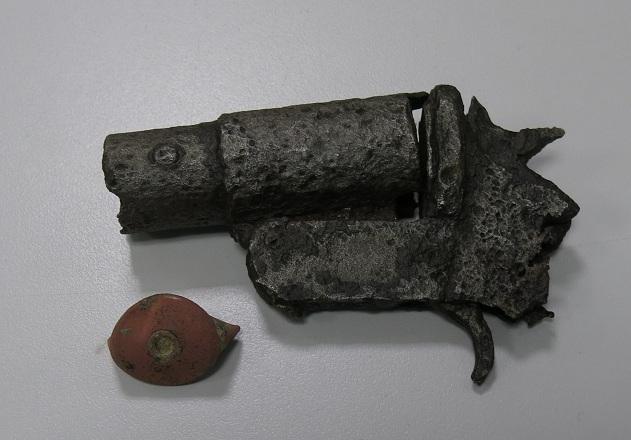
.303 Casings and Bullet:
The .303 (30 calibre) cartridge was Britain’s primary calibre bullet in WW2, it is the equivalent of todays 7.62mm round. The Halifax had a total of four turrets, three of these used browning machine guns with a .303 calibre bullet. The fourth turret was added into the bombers late in their production, as the underbelly of the plane proved to be a vulnerable target for the Luftwaffe night-fighters. When the belly turret was added, it didn’t use the .303 calibre bullet, it instead used a 12.7mm bullet or, .50 calibre, as it is more commonly known.
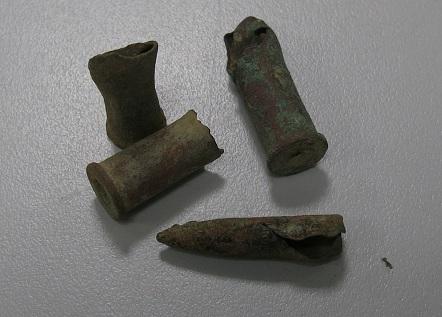
Hydraulics Piece:
In the Halifax wreckage, along with many other pieces there was a segment of a hydraulics system that was found. The hydraulics piece is not distinctive and and identifying which piece of the plane it comes from has not been determined yet but it may have come from the landing gear or from The Boulton Paul Type E Electro-Hydraulic rear and front turrets.
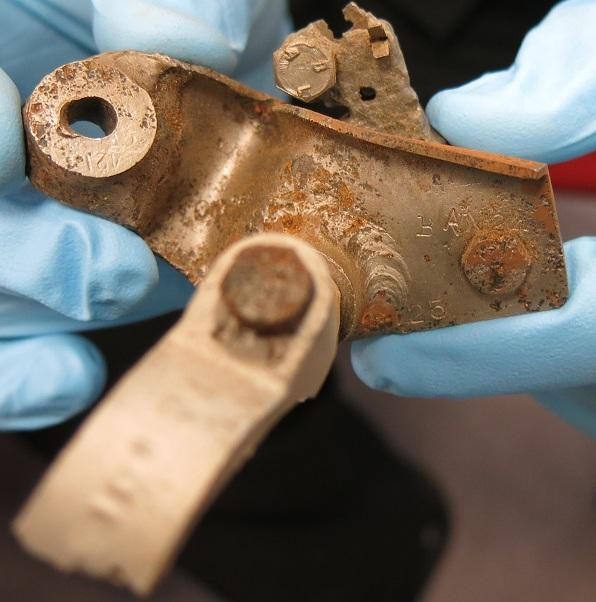
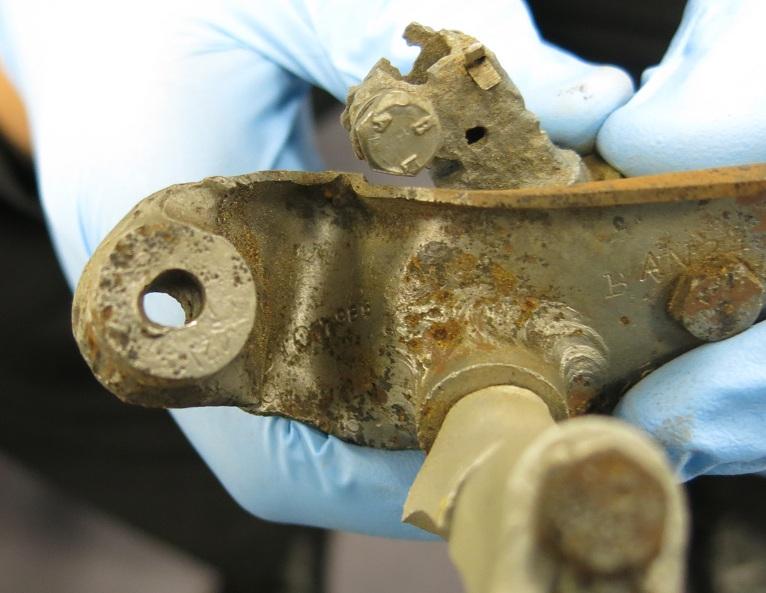
Oil Cap:
The oil cap may not be considered as exciting as the flare gun or the bullet casings, but it is still an important piece of the aircraft. The oil cap is thought to have been used on one of the four Bristol Hercules engines that were used in the Handley page Halifax MK. III. The original quad engine Halifax used four of the Rolls Royce Merlins; these were then upgraded in the MK III to the more powerful Hercules engine then upgraded again for the MK IV to the Hercules Supercharged.

200 meters from the Halifax crash site is a small private chapel. On 17 April 2009 a ceremony was held there and a plaque was unveiled to honour the men of MZ467 and the kindness of the Germans that took in the survivors and looked after them.

